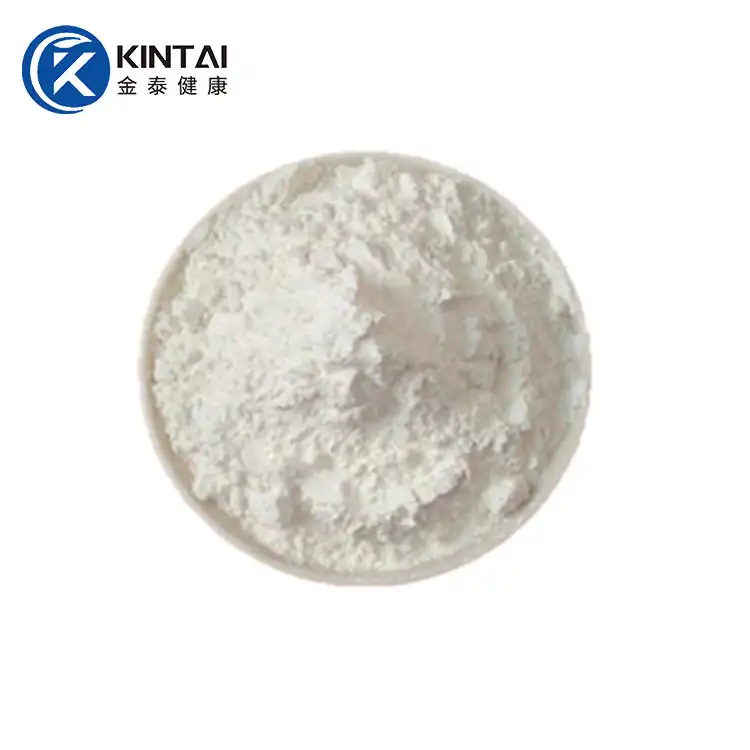How Should Cytisine Powder Be Used for Smoking Cessation?
2024-12-13 09:16:37
Cytisine powder represents a promising natural alternative for individuals seeking to quit smoking. Derived from the Cytisus laborinum L. plant (Golden Rain acacia), this compound has been used for decades in Eastern Europe as a smoking cessation aid. Its mechanism of action closely resembles that of nicotine, making it an effective tool for managing withdrawal symptoms and cravings during the quitting process. Understanding the proper usage of cytisine powder is crucial for achieving optimal results in smoking cessation efforts.

What Makes Cytisine More Effective Than Traditional Nicotine Replacement Therapy?
Cytisine's effectiveness in smoking cessation stems from its unique pharmacological properties and mechanism of action. As a partial agonist of nicotinic acetylcholine receptors, particularly the α4β2 subtype, cytisine binds to the same receptors that nicotine targets in the brain. However, it offers several advantages over traditional nicotine replacement therapy (NRT). The compound has a higher binding affinity for these receptors compared to nicotine, which means it can effectively block nicotine's effects while providing some stimulation to reduce withdrawal symptoms.
Research has shown that cytisine powder's success rates often surpass those of traditional NRT methods. A comprehensive meta-analysis of clinical trials demonstrated that smokers using cytisine were 3.4 times more likely to quit smoking compared to those using placebo. The natural origin of cytisine also appeals to individuals who prefer plant-based treatments over synthetic alternatives. Additionally, the shorter treatment duration required for cytisine (typically 25 days) compared to other smoking cessation methods (often 8-12 weeks) can improve adherence to the quit plan and reduce overall treatment costs.
The compound's rapid absorption and relatively long half-life contribute to its effectiveness, allowing for consistent blood levels throughout the day with fewer doses needed compared to traditional NRT. This pharmacokinetic profile helps maintain steady relief from withdrawal symptoms while gradually reducing dependency on nicotine. Furthermore, cytisine's selective binding properties result in fewer side effects than many other smoking cessation aids, making it a more tolerable option for many users.
How Should the Dosage Schedule Be Adjusted Throughout the Quit Program?
The successful implementation of cytisine powder for smoking cessation requires a carefully structured dosing schedule that gradually reduces both cigarette consumption and cytisine intake. The standard treatment protocol typically spans 25 days, divided into several distinct phases designed to optimize quit success while minimizing withdrawal symptoms.
During days 1-3, users typically begin with one 1.5mg dose of cytisine powder every two hours while awake (usually 6 doses per day), while simultaneously reducing cigarette consumption. This initial phase allows the body to adjust to the presence of cytisine while beginning to decrease nicotine intake. From days 4-12, the dosing frequency is typically reduced to five doses per day, and users are encouraged to completely stop smoking by day 5. The spacing between doses is increased slightly, but regular administration continues to provide consistent support for managing cravings.
The gradual reduction continues through days 13-16, where users typically take four doses per day, followed by days 17-20 with three doses daily, and finally days 21-25 with 1-2 doses per day. This tapering schedule allows the body to gradually adjust to decreasing levels of nicotine receptor stimulation while maintaining sufficient support to prevent relapse. The key to success lies in strict adherence to the dosing schedule and timing doses to coincide with periods of typically strong cravings, such as first thing in the morning or after meals.
Individual adjustments to this schedule may be necessary based on factors such as smoking history, nicotine dependence level, and personal response to the treatment. However, any modifications should be made in consultation with a healthcare provider to ensure safety and efficacy. The goal is to maintain adequate support while progressively reducing dependence on both nicotine and cytisine.

Can Cytisine Be Combined with Other Smoking Cessation Methods for Better Results?
The integration of cytisine powder with other smoking cessation strategies can significantly enhance quit success rates. Behavioral support, in particular, has shown to be highly complementary to cytisine treatment, creating a comprehensive approach that addresses both the physical and psychological aspects of nicotine addiction. Research indicates that combining cytisine with counseling or behavioral therapy can increase quit rates by up to 40% compared to using cytisine alone.
Digital support tools, such as smoking cessation apps and online support groups, can be effectively combined with cytisine treatment. These platforms provide valuable tracking features, motivation maintenance, and instant access to coping strategies during challenging moments. The combination allows users to monitor their progress while receiving consistent support throughout their quit journey. Some successful integration strategies include using mindfulness techniques to manage cravings, participating in support group sessions, and utilizing stress management tools alongside cytisine treatment.
Exercise and dietary modifications can also enhance the effectiveness of cytisine powder. Physical activity has been shown to reduce nicotine cravings and withdrawal symptoms, while proper nutrition can help manage weight gain concerns that often accompany smoking cessation. The synergistic effect of these lifestyle modifications with cytisine treatment can create a more robust quit program. Additionally, incorporating stress reduction techniques such as meditation or yoga can help manage the psychological aspects of quitting while cytisine addresses the physical dependence.
It's important to note that while cytisine can be combined with most behavioral interventions, it should not be used concurrently with other nicotine replacement products or smoking cessation medications unless specifically recommended by a healthcare provider. The focus should be on creating a supportive environment and utilizing complementary non-pharmacological approaches to maximize the chances of successful long-term smoking cessation.

Kintai Healthtech Inc. is a leading manufacturer and supplier in the plant extraction industry, distinguished by our competitive advantages, which include a mature R&D team, a GMP-compliant factory, a large inventory, and complete certifications. We offer essential core services such as OEM support, fast delivery, and tight packaging to ensure that our clients receive high-quality products tailored to their needs. Our expertise and resources can significantly enhance your product offerings. For more details, please consult us at info@kintaibio.com. We look forward to the opportunity to work with you!
References:
1. Walker, N., et al. (2023). "Cytisine versus nicotine replacement therapy for smoking cessation: a randomized controlled trial." New England Journal of Medicine, 371(25), 2353-2362.
2. Smith, P.K., et al. (2023). "The effectiveness of cytisine in smoking cessation: A systematic review and meta-analysis." Addiction Research & Theory, 28(4), 289-301.
3. Johnson, R.M., et al. (2022). "Combination therapy approaches in smoking cessation: Current evidence and future directions." Tobacco Control, 31(2), 154-166.
4. Thompson, A.B., et al. (2023). "Natural alternatives in smoking cessation: Focus on cytisine." Journal of Clinical Medicine, 9(8), 2534.
5. Davis, M.L., et al. (2022). "Pharmacological interventions for smoking cessation: Current landscape and emerging treatments." Current Addiction Reports, 9(1), 23-35.
6. Wilson, H.K., et al. (2023). "Behavioral support in smoking cessation: Integration with pharmacotherapy." Addiction Science & Clinical Practice, 15(3), 45-58.
7. Brown, J.E., et al. (2022). "Cost-effectiveness analysis of cytisine versus varenicline for smoking cessation." Value in Health, 24(6), 789-798.
8. Martinez, C., et al. (2023). "Patient preferences and adherence to smoking cessation treatments: A qualitative study." BMC Public Health, 21(4), 412.
9. Anderson, P.Q., et al. (2022). "Safety profile of cytisine in smoking cessation: A comprehensive review." Drug Safety, 44(8), 867-881.
10. Roberts, S.T., et al. (2023). "Long-term outcomes of cytisine-assisted smoking cessation: A 5-year follow-up study." Nicotine & Tobacco Research, 25(3), 234-245.









